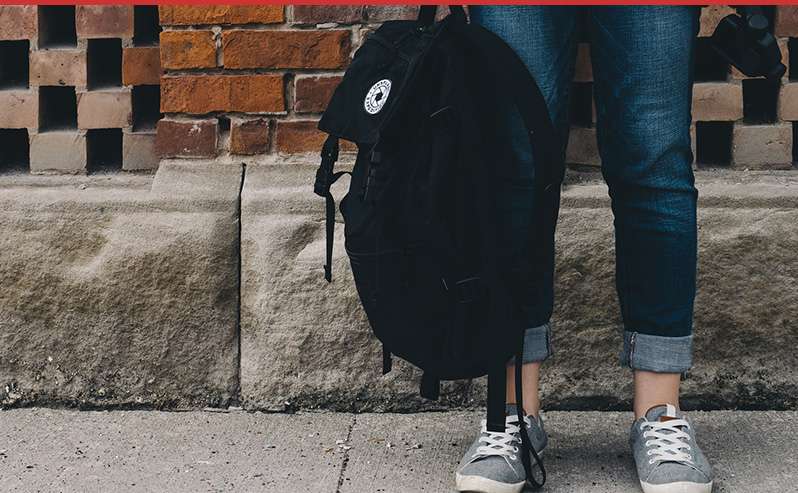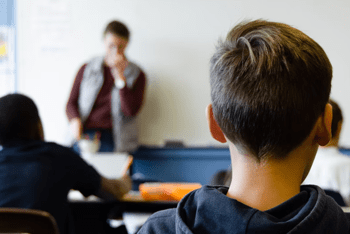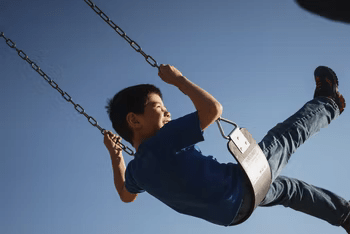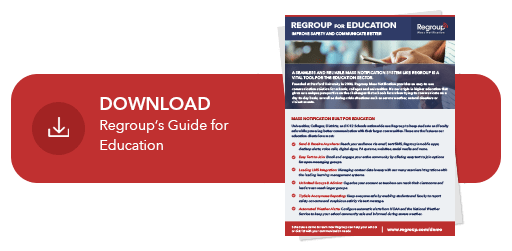
Tips for Keeping Your School Safe in Times of Crisis
How can we better protect students and faculty from active shooter events and other violence in our nation’s schools? Regroup offers some insights.
Once again, the United States is the center of global attention due to violence in our schools. The mass shooting at a small school in Uvalde, Texas earlier this month illustrates the very real need for strong safety measures in our nation’s schools.
In response to the events in Uvalde and Buffalo, the United States lower house passed new legislation that would ban the sale of semi-automatic rifles to citizens under the age of 21. Along with this measure, a number of other bans have been introduced in this legislation. It is believed, however, that these new measures will ultimately fail in the United States Senate.
Along with the extreme violence of school shootings, students from every grade can potentially face bullying, harassment, physical violence and nearby adult predators. These things combine to create a complex and multifaceted predicament for faculty and staff in ensuring the safety of the student body.
Schools and local law enforcement have an obligation to create the safest possible environment for all students in the classroom, on campus and among their classmates. But, the challenges have evolved over the years with larger numbers of students, fewer resources and budget concerns that impact most public schools across the United States.
Working in cooperation with parents and local law enforcement is always helpful. But, continual assessment and improvement of safety procedures are essential for maintaining a safe and secure learning environment.
 Identify Potential Weaknesses
Identify Potential Weaknesses
Part of any smart safety plan is ensuring that entrances and exits are secure at all times. A possible checklist for identifying weaknesses could include:
- Are student entrances equipped with appropriate monitoring devices?
- Are parental/guardian entrances clearly marked and monitored?
- Is there a clear policy for parents and guardians to gain access?
- Are emergency exits accessible to all students, including those with disabilities?
- Are security cameras in good working order at all times?
Stay One Step Ahead of Danger
School and safety officials work diligently to provide a secure learning environment for all students. As part of an overarching safety plan, annual or semi-annual review of certain safety measures can be helpful.
- Review evacuation procedures
- Review shelter in place procedures
- Review parent and guardian notification policies
- Identify individual response actions
- Review staff communication procedures
 Strengthen Communication
Strengthen Communication
Having a strong communication plan is essential in supporting a school safety plan. Opening the lines of communication with parents and guardians and having an alerting protocol can help keep students and faculty informed during routine school days and alert when danger threatens.
- Make communication protocols known to all staff members
- Have a plan to communicate potential threats to parents and guardians
- Use a platform that works during outages
- Use actionable instructions for responders and resource officers
More Resources
There is a wealth of information available to school administrators to help keep school facilities and campuses safe. Even with budget and personnel constraints, schools can work with parents and local officials to bolster their security in a number of ways. Here are some helpful resources provided by the National Center on Safe Supportive Learning Environments:
- Assessing Your School Safety
Online course for assessment and preparedness - Indicators of School Crime and Safety
Bureau of Justice Statistics for Schools - Safe Routes to School Programs
Infrastructure improvements for students traveling to and from school
Your Next Steps
We invite you to download Regroup for Education. This quick read will show you how a smart communication plan, coupled with the right tools, can keep students and staff safer every day and during emergencies.
